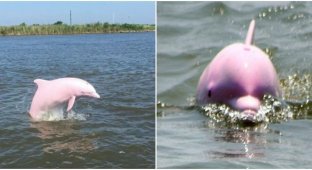A lonely dolphin was found in the Baltic Sea: it “talks” to itself (2 photos)
Five years ago, residents of the Danish town of Svendborg noticed that a male bottlenose dolphin had taken up residence in the local strait. This is an unusual habitat for these animals, as bottlenose dolphins usually live in schools and prefer warm waters. 
A male bottlenose dolphin took up residence in the Svendborgsund Canal in the Baltic Sea in Denmark five years ago. The case is unusual because dolphins are social animals that usually live in schools. Therefore, the loner attracted the attention of marine biologists.
The scientists arrived at the site and lowered a microphone into the water to understand why the dolphin was alone, how he chose this channel as his home, and what kind of relationships he had built with the local porpoises. And they were amazed by his incessant chatter.
"I thought we would catch a few distant whistles or something like that. I definitely didn't expect to record thousands of different sounds," biologist Olga Filatova admitted.
Delle, as the locals called the dolphin, made a whole range of sounds: from clicks and whistles to sounds associated with aggressive behavior. Among them were sounds that bottlenose dolphins use to communicate with each other, as well as three characteristic repeating whistles.
"Bottlenose dolphins have so-called signature whistles, which are considered unique to each individual - like a name. If we hadn’t known that Delle was alone, we could have concluded that a group of at least three dolphins were engaged in various social interactions,” Filatova explained.
The initial theory that Delle was trying to attract people’s attention was refuted — he continued to chatter at night, even when no one was around. Some of the sounds he made were associated with emotional outbursts, similar to a person laughing at something, despite being alone.
The researchers are almost certain that the dolphin was talking to itself to distract itself from the feeling of loneliness. 
The study was published in the journal Bioacoustics. Scientists continue to monitor Delle's behavior to better understand how dolphins adapt to life alone.
























